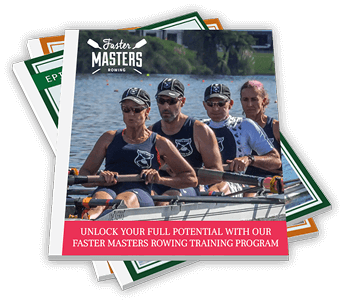Nobody wants to look like a lump clumbering around. So what's the best way to get into a single? And how can you adapt that if your mobility isn't what it once was?
Timestamps
01:00 Single sculls - how to feel safe getting in and out.
02:45 The basic method demonstrated by Nathan Benderson Park - How to: 3 ways to board a rowing scull.
- Start with positioning the blades. Ensure the handles overlap or are touching so the ends butt up together.
- Hold the handles with both in one hand (the hand closest to the water).
- Create stability by putting upward pressure on the handles.
- Push the seat backwards on the slide so you have enough space to step onto the deck of the boat.
- Put your (closest to the water) foot onto the deck.
- Transfer your weight onto that foot and bring the other foot over from the dock to join it.
- Lower yourself onto the seat (keep pulling he handles up)
05:30 She makes useful remarks about how the wind is pushing the boat away from the dock and how to ensure it doesn't drift away while you are getting into the boat. Get into the habit of first assessing the wind and weather conditions before getting on the water. This is a good safety practice.
06:30 Hold the handles WITHOUT your finger between the grips. A better way to hold the scull handles when getting in and out of the boat. Create a triangle of strength with the oar handles to make the boat more stable.
Getting into 1x from a seated position
07:40 Getting into a single from a seated position.
Position the oars in the same way as for the basic method above.
- Sit on the dock and hold the handles in the OTHER HAND (the one closest to the dock).
- Keep upwards pressure on the handles.
- Position the seat and place your other hand behind the seat (closer to the bows) on the deck.
- Pull your feet close to your bum (butt) and use the hand on the deck to push up and lift your bum across onto the seat.
- Simultaneously push on your foot (the one furthest from the boat) to enable you to get your bum off the ground and over the gunwale / sax board of your single.
- Sit on the seat.
- Bring your other leg over into the boat.
Rowing with adaptations
09:45 Rowing with adaptations
Athletes with knee issues won't be able to do this seated method. Know some variations which you can suggest to these folks. It's important they feel safe getting into a single scull.
- Adaptation #1 - hold the rigger for them
- Adaptation #2 - they need two hands to push up their body weight so cannot hold the handles. You hold the oars and /or the rigger for them to create stability.
- Adaptation #3 - start kneeling all fours and 'roll over' to sit on the seat.
12:15 Swan poo on the dock. Add cut down yoga mats to the dock so you can sit / kneel on a clean surface.
If this is useful for you, please support the podcast with a monthly donation to fund our advocacy work with clubs and federations to improve masters rowing.
Standing push off into a single scull
John Tracy - the standing push off method of getting into a single scull.
15:30 Push out the water side scull, position the seat and place one foot on the deck of the boat.
- Hold the rigger or bank side blade shaft with your hand (the water-side hand holds the oar handles). This allows you to balance and control your body weight and create stability as yo transfer weight from the dock to standing in the boat.
- 16:16 As you push off you want a lot of weight on the foot on the dock so you can give it a big push.
- As he pushes, he transfers weight to the foot in the boat.
- Balance is achieved by controlling the tilt of the boat by holding the oar shaft or rigger. Stand with both feet on the deck and sit down.
- 17:15 the bank side blade is still on top of the dock.
- Pull this oar towards you - ensure it's squared - use the oar tip to push out against the side of the dock.
- The other hand holds the entire boat level while the oar rests on the surface of the water. You can hold the single level with only one hand/oar.
19:15 Other considerations - once you have the basics. Get a friend to be nearby to catch a rigger if you get unbalanced. Boats tip a lot before you fall in - try rigger dipping. Work out how far you can tilt the boat before you fall in.
Get in and out of your boat safely is a good way to learn boat handling skills. These promote safety and control in different weather conditions.

